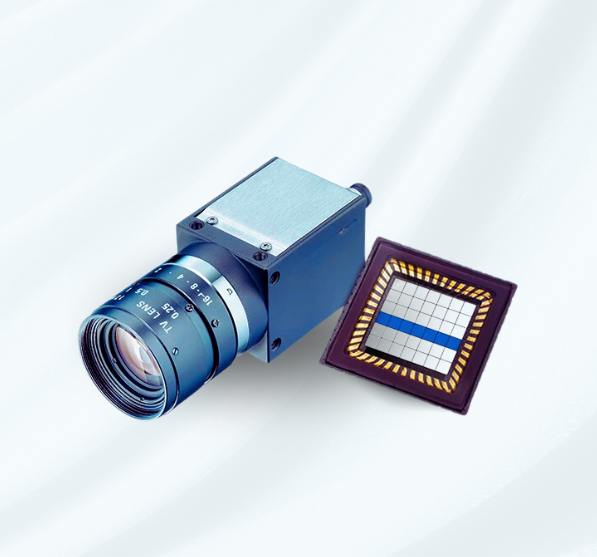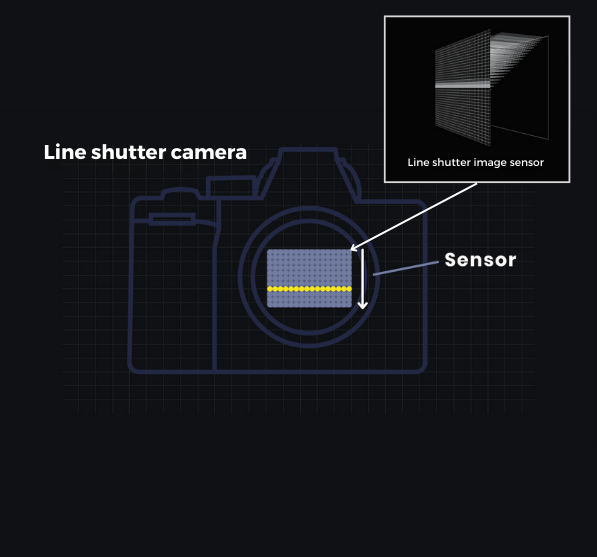What is a Line Shutter Camera, its Features, Benefits & Applications?
Published on: Aug 12, 2024

Written by: Admin
What is a Line Shutter Camera?
A line shutter camera captures images one line at a time using a single row of pixels, scanning across the subject or scene to build a complete image, ideal for precise and detailed scanning.

How Line Shutter Cameras Work
- Line Sensor:
- The camera contains a linear array of photosensitive elements (pixels), typically arranged in a single row.
- Scanning Motion:
- Either the camera or the object moves in a controlled manner, allowing the line sensor to capture successive lines of the image.
- Image Reconstruction:
- As each line is captured, the camera's processing unit stitches these lines together to form a complete image.

Key Features and Advantages
- High Resolution:
- Line shutter cameras can achieve extremely high resolutions because the length of the image is not limited by the sensor size. The resolution along the scanning axis can be very high, depending on the speed and precision of the movement.
- Uniform Illumination:
- These cameras ensure uniform illumination across the entire field of view, as each line is exposed to light under the same conditions, reducing lighting inconsistencies.
- Consistent Image Quality:
- Line shutter cameras provide consistent image quality without the distortion seen in some area scan cameras, especially in high-speed applications.
- High Speed:
- They are well-suited for high-speed applications since they can capture images quickly without the need for large sensor arrays.
Applications of Line Shutter Cameras
Line shutter cameras are ideal for applications that require detailed inspection, high resolution, and consistent image quality across large or moving objects. Here are some common use cases:
- Industrial Inspection:
- Use Case: Inspecting products on a production line for defects or quality control.
- Advantage: High resolution and speed allow for precise inspection of fast-moving items.
- Print Inspection:
- Use Case: Checking the quality of printed materials such as newspapers, magazines, and labels.
- Advantage: Ability to capture fine details and detect defects over large print surfaces.
- Web Inspection:
- Use Case: Monitoring continuous materials such as paper, textiles, or metal sheets during production.
- Advantage: Continuous scanning capability ensures complete coverage and detection of defects.
- Medical Imaging:
- Use Case: Scanning large biological samples or tissues in detail.
- Advantage: High resolution and uniform illumination help in producing clear and detailed medical images.
- Document Scanning:
- Use Case: Digitizing large-format documents, books, or artworks.
- Advantage: High-resolution scanning ensures accurate reproduction of the original material.
- Surface Inspection:
- Use Case: Inspecting surfaces of large objects like aircraft wings, vehicle bodies, or ship hulls.
- Advantage: Ability to scan large, continuous surfaces with high precision.
- Scientific Research:
- Use Case: Imaging in laboratories for experiments that require detailed observation of materials.
- Advantage: High resolution and precise imaging capabilities support accurate research observations.
Line shutter cameras are a powerful tool for applications requiring high resolution, uniform illumination, and precise image capture over large or moving objects. Their ability to scan line by line makes them particularly useful in industrial inspection, print and web inspection, medical imaging, document scanning, surface inspection, and scientific research. When choosing a line shutter camera, consider the specific requirements of your application, including resolution, speed, and the nature of the objects being imaged.

